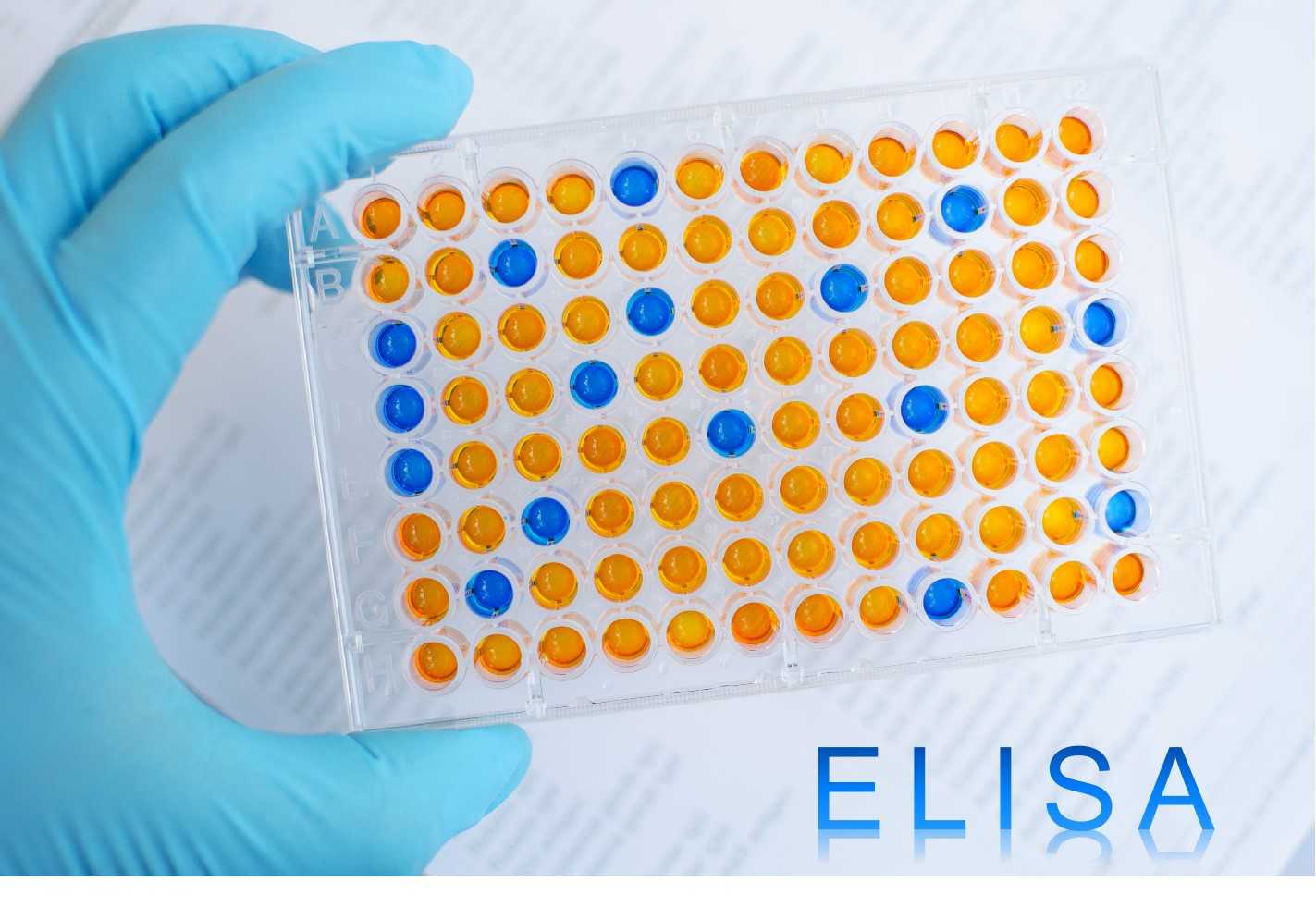Enzyme-linked Immunosorbent Assay (ELISA)
Enzyme-linked immunosorbent assay (ELISA) is a plate-based assay technique designed for detecting and quantifying peptides, various proteins and hormones. As its name indicates, ELISA involves the specific antigen-antibody binding and the use of enzymes. In an ELISA, an antigen (or antibody) must be immobilized to a solid surface. After incubating with specific antibody (or antigen), enzyme-conjugated antibody will be added. Detection is finally accomplished by assessing the conjugated enzyme activity via incubation with a substrate to produce a measurable product.
ELISA is typically performed in 96-well polystyrene plates, which will passively bind antibodies and proteins. Binding and immobilization of reagents make ELISA easier to design and perform. Having the reactants of the ELISA immobilized to the microplate surface makes it easy to separate bound from non-bound material by repeated washing steps. This ability to wash away nonspecifically bound agents makes the ELISA a powerful tool for measuring specific analytes within a crude preparation.

According to how it works, ELISA can be divided into four major types, namely direct, indirect, sandwich, and competitive ELISA. Advantages and disadvantages of four major ELISA types are illustrated as follows.
| Advantages | Disadvantages | |
| Direct ELISA |
|
|
| Indirect ELISA |
|
|
| Competitive ELISA |
|
|
| Sandwich ELISA |
|
|
Due to the specific needs of the experiment, the availability of reagent materials as well as limitations and defects of the method itself, many other detailed and specific ELISA modes are derived on the basis of these four models. Here is the summary about types of ELISA.
- Indirect ELISA
- Competition (Inhibition) ELISA
- Direct ELISA with Streptavidin-biotin Detection
- Sandwich ELISA with Streptavidin-biotin Detection
- Sandwich ELISA with Direct Detection
- Pharmacokinetic (PK) Bridging ELISA Measuring Free Drug
- Pharmacokinetic (PK) Bridging ELISA Measuring Total Drug
- Pharmacokinetic (PK) Antigen Capture ELISA Measuring Bound Drug Exclusively
- Anti-drug Antibody (ADA) Bridging ELISA
In addition to the ELISA types above, there are other ELISA types that help meet the various demands of experiments. For example:
ELISPOT
1. ELISPOT, enzyme-linked immunospot, is used to measure the frequency of protein-secreting cells at the single-cell level. The technique that ELISPOT uses is very similar to that of sandwich ELISA.
In-cell ELISA
2. In-cell ELISA is used to measure the levels of the target protein within cells that are fixed on the plate. It also involves the use of the technique used by sandwich ELISA. Cells are fixed to the plate and are permeabilized. Next, a primary antibody is added to react with the target protein within the cells. Lastly, a labeled secondary antibody is added to react with the primary antibody. In this way, the target protein within cells is detected.


